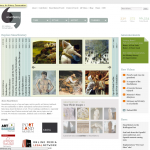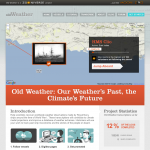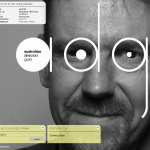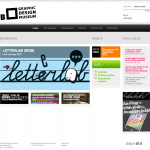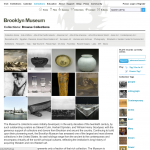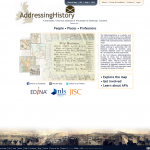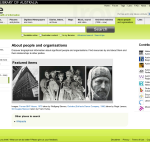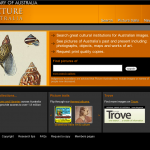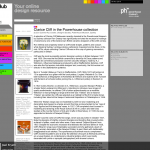Entries Tagged as 'consultation'
Testing: abridged database for schema design
We are currently seeking feedback from Key Users/Contributors about how we are expanding certain areas of data capture in the database. Below is a short (6 min) video in which Jo Croucher (Our Data Manager) and I talk through some of the issues that we are using this abridged version of database to test. Those of you who have been asked to test this have been sent an email.
Click here to see AbridgedSchemaTest2
Feedback notes:
Friday; Feedback two CIs/Editorial Board Members.
Negative ( which is a good thing when trying to solve a problem!)
Too much information on works? is measurement necessary?
Too many stubs will be generated if we create record files for each ROLE associated with the production of works ( particularly in design)? Ie. we don’t need a record for Kambrook associated with Musset’s kettle. Just need to be able to note that Kambrook made it. ?
Requests for clear citation policy (I agree but this is an editorial Board issue- over to you!)
Positive( also useful)
Like the way that works can be dividied into parts- helps with complex works.
Like the way that Roles will now be searchable. Also appreciate the inclusion of curators and arts professionals.
Appreciate the logic of associating medium with work, rather than a person. So person + Role and Medium +work.
Tuesday; CI x2 ( I CI also Ed board)
Measurement is important and should stay as field for design objects. ( 1)
Both want clear citation and additional reading policies.
Issues with category confusion over medium- ie Musset eg. Is Industrial design of the same order as Plastics etc… (totally right- catgeories get covered by TAGs and medium is medium and relates to a specific work.)
Agree that we don’t need records for every associate- we need to define primary roles ( ie Creator, curator etc) who get full records and secondary roles ( ie Kambrook in the Musset eg) who don’t.
- Comments Off on Testing: abridged database for schema design
- Email to friend
- Stay updated
Floodgates open!
Many of you, particularly those of you on the Editorial Board and the Art- and Design Research Groups will have been receiving quite a few emails from Olivia and I this week; informing you of consultation processes and timelines; providing reports and asking for feedback, updates on how work is proceeding on the MREII grant.
Others will have been talking to Zina Kaye, our consultant Business Analyst. I have now managed to have a lovely informative telephone conversation with everyone except two of our CIs who are currently overseas. Its been great to finally chat to everyone, it grounds the project back to its core business of research. I’ve been learning so much about Australian art history. I had no idea how little I knew. its wonderful to be on learning curve.
A lot of the recent communication frenzy is due to the fact that the jewel in the DAAO crown, Olivia Bolton, is about to go on her first holiday in way too long and so we are both finalising matters requiring her core knowledge before she goes off for a wonderful relaxing email free month in France. It will calm down once Olivia goes at end September.
The project is really gearing up. We now have a Data Manager, Jo Croucher, who will work with us for 2 days a week until Christmas. Jo is seconded to us from UNSW library is a very able and tech savvy librarian who is very proficient in metadata organisation. She has come on board just in time as she will be crucial to our process of metadata field extension and refinement.
Over the next few weeks, you will find more activity happening on the Research Finding page as we start loading up summaries of your feedback to various tasks. By communicating to each other through google docs by way of questionnaires and forms, shared documents and then feeding them back into the blog, I am hoping to make the processes of our collaboration as transparent as possible. We also have the side benefit of generating documentation as we go. I have posted up a table on the Research Results page that shows how CIs have been organised into groups that provide different resources to the DAAO over the life of the grant.
(BTW: Apologies to those members of the Art Advisory group that received a questionnaire with a repeat of block text in a section- working in those tiny workflow boxes in google forms is as bad as some of the text boxes in the back end of the DAAO. Our proofer will pick up such errors in future!)
- Comments Off on Floodgates open!
- Email to friend
- Stay updated
Schema Design!
Its been a big week as we have been concentrating on Schema Design. We have been analysing the new datasets that have been coming our way and continuing our phone and face to face interviews with CIs to clarify and refine exactly how we need to extend over coverage in the ares of Exhibitions, Organisations, Galleries, Curators, Gallery Directors and more.
A lot of issues are emerging about how important it is to capture data on the development of Arts infrastructure and industries. It is so exciting talking to the CIs about their research and to find out in detail how researchers are using the DAAO. As I listen to Caroline Jordon or Cathy Speck talk about the history of Australian Arts infrastructure, I keep seeing in my head all the amazing visualisations we could produce to articulate the relationships between money, people, insitutions, works and more over time. One of the most obvious example of the power of dynamic, relational visualisation as a research tool is Gapminder. http://www.gapminder.org/
Unfortunately such wonders are not for this LIEF, but we will be able a database which such good structure in this grant, that all kinds of uses of it will be possible for future development.
Another highlight of this week has been analysing Amy Griffiths’ research database on Artist Run Initiatives. Capturing the complexity of organisations and exhibitions is a key concern for this LIEF and being gifted such a well researched database on such a vital area really helps us design fields to capture previously elusive information. Amy Griffiths is completing a Masters in Arts Administration at COFA.
We have now also organised the process of consultation and sign off for the SCHEMA DESIGN stage of this project.TWO advisory groups have been formed to drive the schema refinement and extension; ART Advisory Group and DESIGN Advisory Group. The Editorial Board will ‘shadow’ discussions in both groups ( these will be synopised to keep information manageable) and can contribute to discussions at the same time as the advisory groups. The aim is for consensus between advisory group and editorial board and the process is designed to produce such outcomes.
The Diagram below maps the workflow of consulting, testing and sign off.
- –
We have almost completed initial consult stage
We have begun refining our scenarios and benchmarks.
Due to the tight timeline of this project, if we are to launch on time and complete on budget,we need a tight turnaround on feedback from our CIs. We must remain on time. Please book some time in your busy schedules during the relevant weeks for feedback and testing. Each Advisory group will be notified of its timelines by email. Turnaround period will be one week.
We will email information for feedback to Groups and Ed Board. We will use online survey to gauge your feedback. WE ALWAYS WELCOME A PHONE CALL. Talking is very efficient. If you feel your feedback cannot be captured by the survey we provide. We can call you.
Once we get your feedback, we will make a quick wireframe database so we can test that we are capturing the relationships we need. We will be asking you to test the database by setting it the type of queries you need answered. Again the turnaround period will be one week.
- Comments Off on Schema Design!
- Email to friend
- Stay updated
Recent Posts
Archives
Tags
-
agile art history Australian Art Australian art history Bernard Smith bookmarking collaboration community conferences consultation Content contribute Craft crowdsourcing data Datamanagement datamigration design diagrams digitalHumanities feedback Feminism fun import library look&feel maps metadata new media art obituaries office party matching projects research schema scholarship social media Sydney Biennale University of Melbourne Special Collections Collaboration user experience Visualisation visualization WA whiteboard youtube
WP Cumulus Flash tag cloud by Roy Tanck and Luke Morton requires Flash Player 9 or better.

